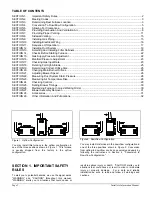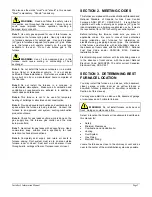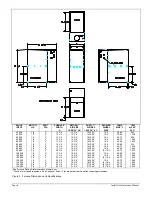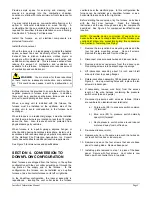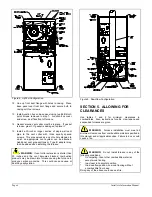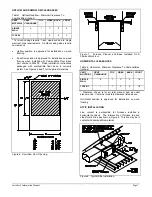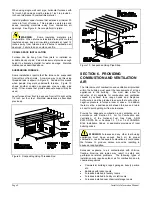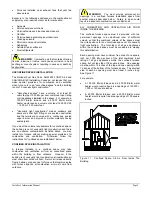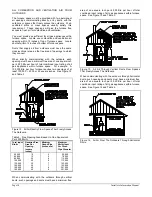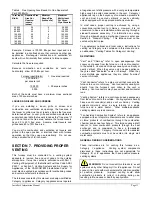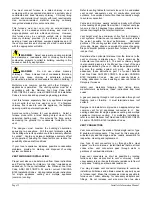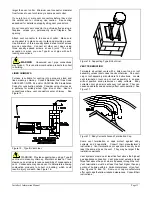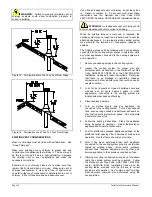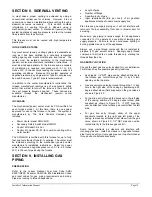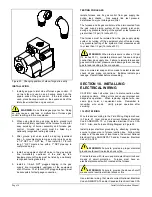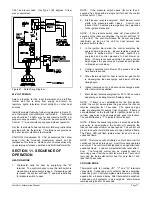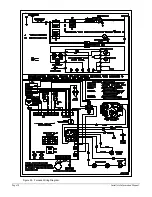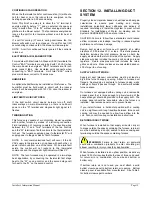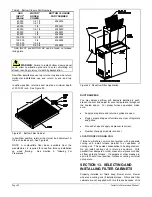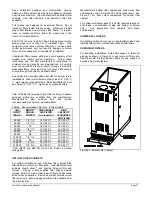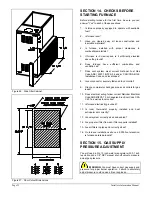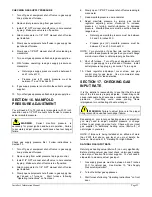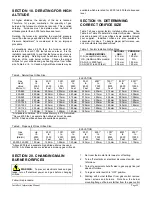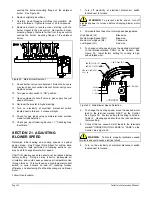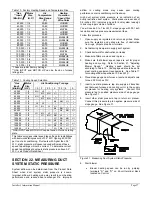
Page 14
Installer’s Information Manual
WARNING
: Failure to properly terminate vent or
chimney systems could allow combustion products to
collect in building.
Figure 18. Termination More Than Ten Feet From Ridge.
Figure 19. Termination Less Than Ten Feet From Ridge.
EXISTING VENT CONSIDERATIONS
Masonry chimneys must be lined with suitable liner. See
"Lined Chimneys".
Make sure existing vent or chimney is proper size and
construction for appliances that will use it. The best way to
do this is to size as if it were a new installation. Compare
the existing vent to your calculations and make the
necessary corrections.
Examine vent or chimney clean-outs to make sure they
remain tightly closed when not in use. Make sure vent or
chimney passageway is clear and free of obstructions.
Look for evidence of condensate or deterioration in vent or
chimney. Either of these means an inadequate vent.
If you find an inadequate vent or chimney, do not leave it as
is. Repair or replace it. A new vent must meet these
instructions and the National Fuel Gas Code ANSI
Z223.1/NFPA 54 and/or CAN/CGA B149 Installation Codes.
WARNING
: An inadequate vent or chimney could
allow combustion products to collect in building.
When an existing furnace is removed or replaced, the
venting system may no longer be properly sized to vent the
attached appliances. An improperly sized venting system
may promote the formation of condensate, leakage or
spillage.
The following steps shall be followed with each appliance
connected to the venting system placed in operation, while
any other appliances connected to the venting system are
not in operation:
1. Seal any unused openings in the venting system;
2. Inspect the venting system for proper size and
horizontal pitch, as required in the National Fuel Gas
Code, ANSI Z223.1/NFPA 54 or the CAN/CGA B149
Installation Codes and these instructions. Determine
that there is no blockage or restriction, leakage,
corrosion and other deficiencies that could cause an
unsafe condition;
3. In so far as is practical, close all building doors and
windows and all doors between space in which
appliance(s) connected to the venting system are
located and other spaces of building.
4. Close fireplace dampers.
5. Turn on clothes dryers and any appliance not
connected to the venting system. Turn on any exhaust
fans, such as range hoods and bathroom exhausts, so
they shall operate at maximum speed. Do not operate
a summer exhaust fan.
6. Follow the lighting instructions. Place the appliance
being inspected in operation. Adjust thermostat so
appliance shall operate continuously;
7. Test for drafthood equipped appliance spillage at the
drafthood relief opening after 5 minutes of main burner
operation. Use the flame of a match or candle;
8. After it has been determined that each appliance
connected to the venting system properly vents when
tested as outlined above, return doors, windows,
exhaust fans, fireplace dampers and any other gas-
burning appliance to their previous conditions of use;
9. If improper venting is observed during any of the above
tests, the venting system must be corrected. Follow
the National Fuel Gas Code, ANSI Z223.1/NFPA 54
and/or CAN/CGA B149 Installation Codes and the
venting tables provided with the furnace to correct
improper vent operation. Any "common vent" re-sizing
must approach minimum size determined using the
venting tables.


